Peace and politics in South Sudan

CPAID comics series
As part of a series of six comics on public authority across Africa, South Sudanese cartoonist and comic artist Tom Dai has illustrated CPAID’s research on issues of public authority and peace-making in South Sudan. Based on real events, the comic explores what repetitive peace meetings mean for peace and public authority in the country.
View the comic here or scroll down below.
The researchers drew on ideas of public authority to explore whether these peace meetings were producing outcomes for people that were inclusive or exclusive.
Peace meetings as a tool for cementing authority
In 2018, a peace deal between the South Sudan government and the largest armed opposition group ended five years of war between them. By 2018, 400,000 South Sudanese had died as a result of direct violence or because of the consequences of war, such as malnutrition and lack of health access. A further 4 million South Sudanese had fled the country.
While the 2018 peace deal brought hope that conflict would stop, incidents of armed conflict continued. These ongoing conflicts have often been framed as local disputes and, in response, local governments, NGOs and other local actors have initiated local peace meetings to negotiate between parties. These meetings often map onto recent histories of repetitive peace meetings at the local level.
The research and this cartoon focused on the consequences of repetitive peace-making. While these meetings have the potential to restrain violence and predatory authority, the cartoon also explores how they can cement exclusive, authoritarian and militarised authority. In particular, the cartoon explores how actors from the hakuma (the government in a broad sense, including both the South Sudan government and armed opposition) have used peace meetings to cement their authority and suppress opposition.
Research for this cartoon was conducted by at the LSE Centre for Public Authority and International Development based at the Firoz Lalji Institute for Africa.
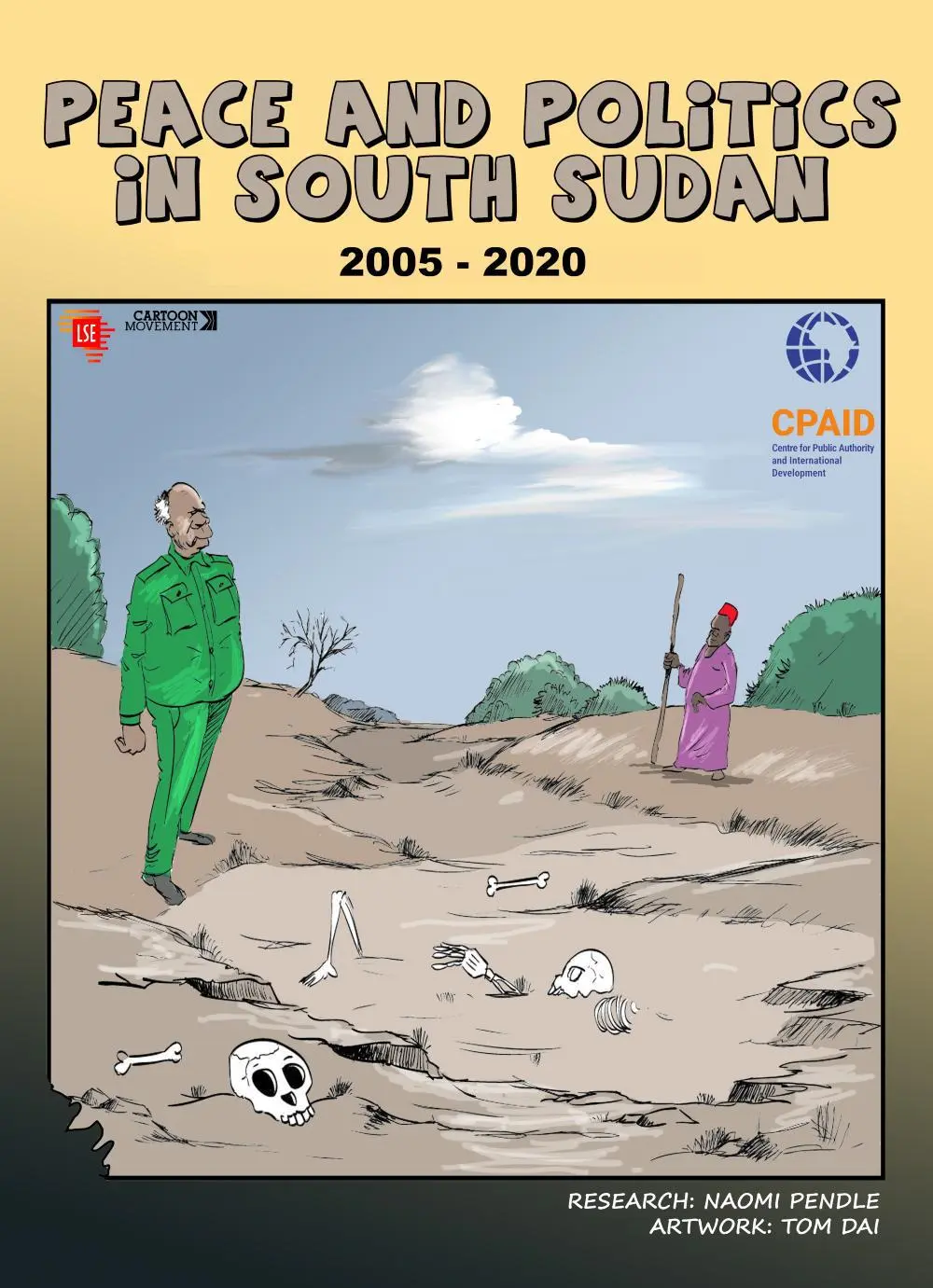
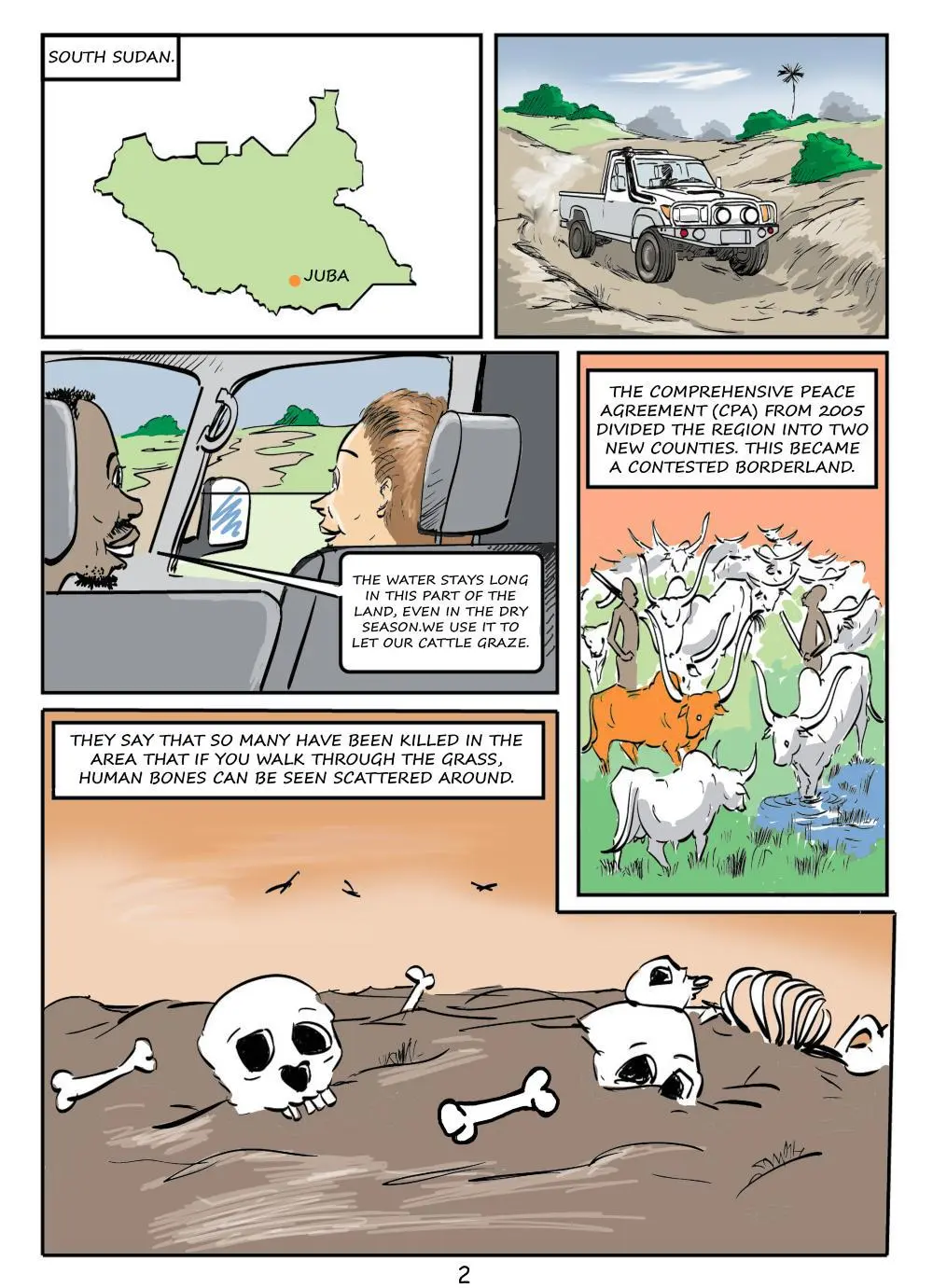
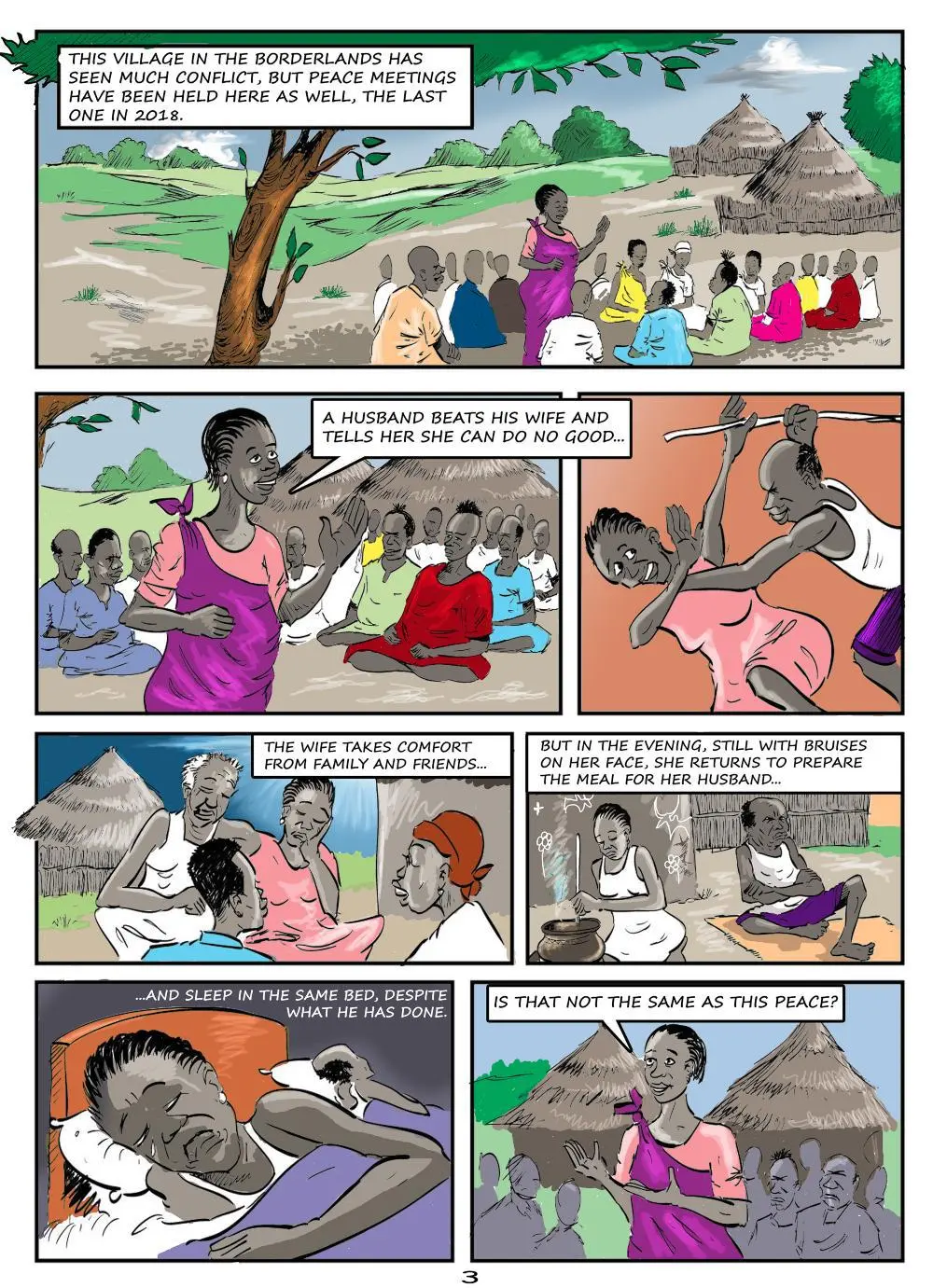
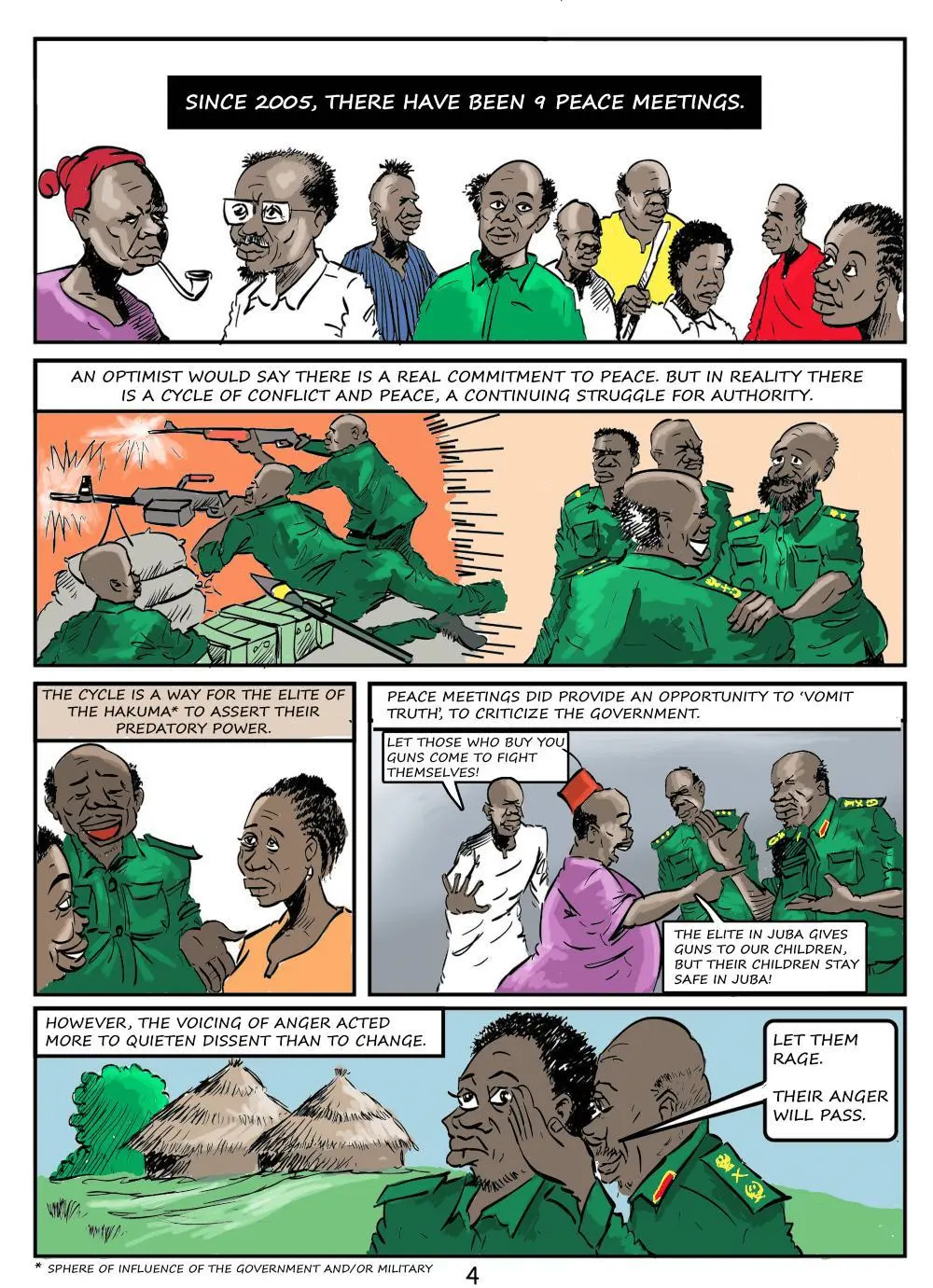
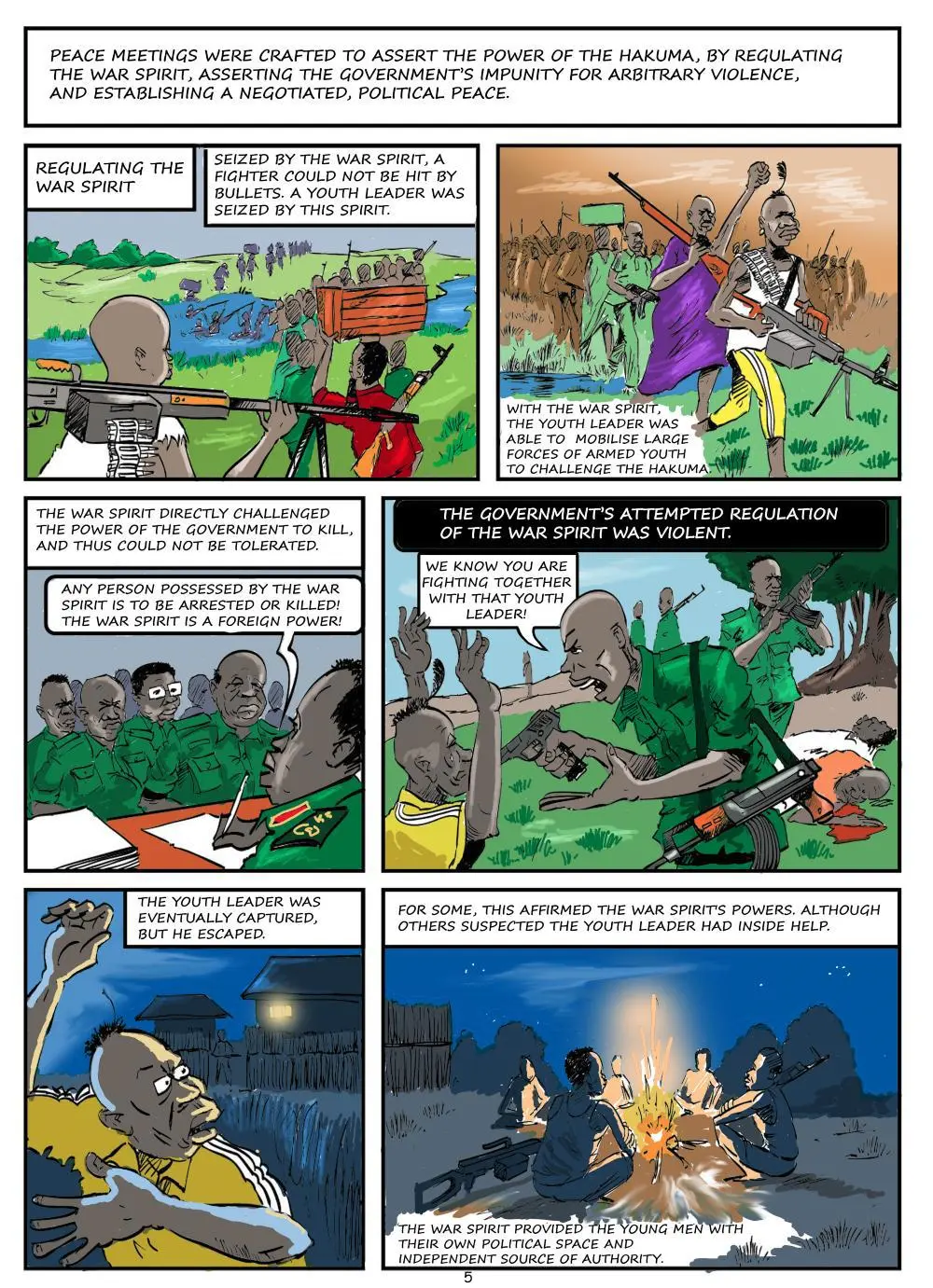

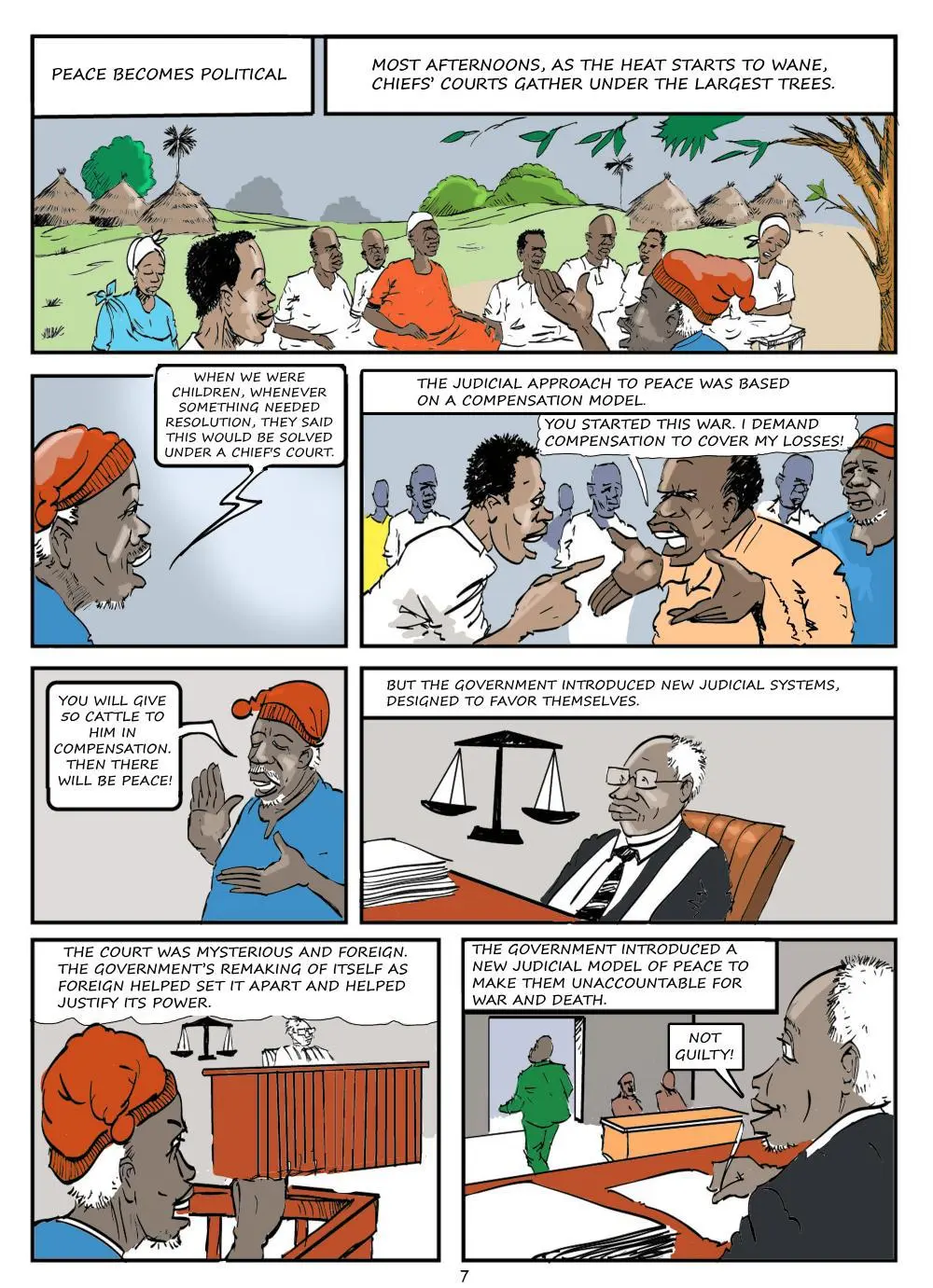
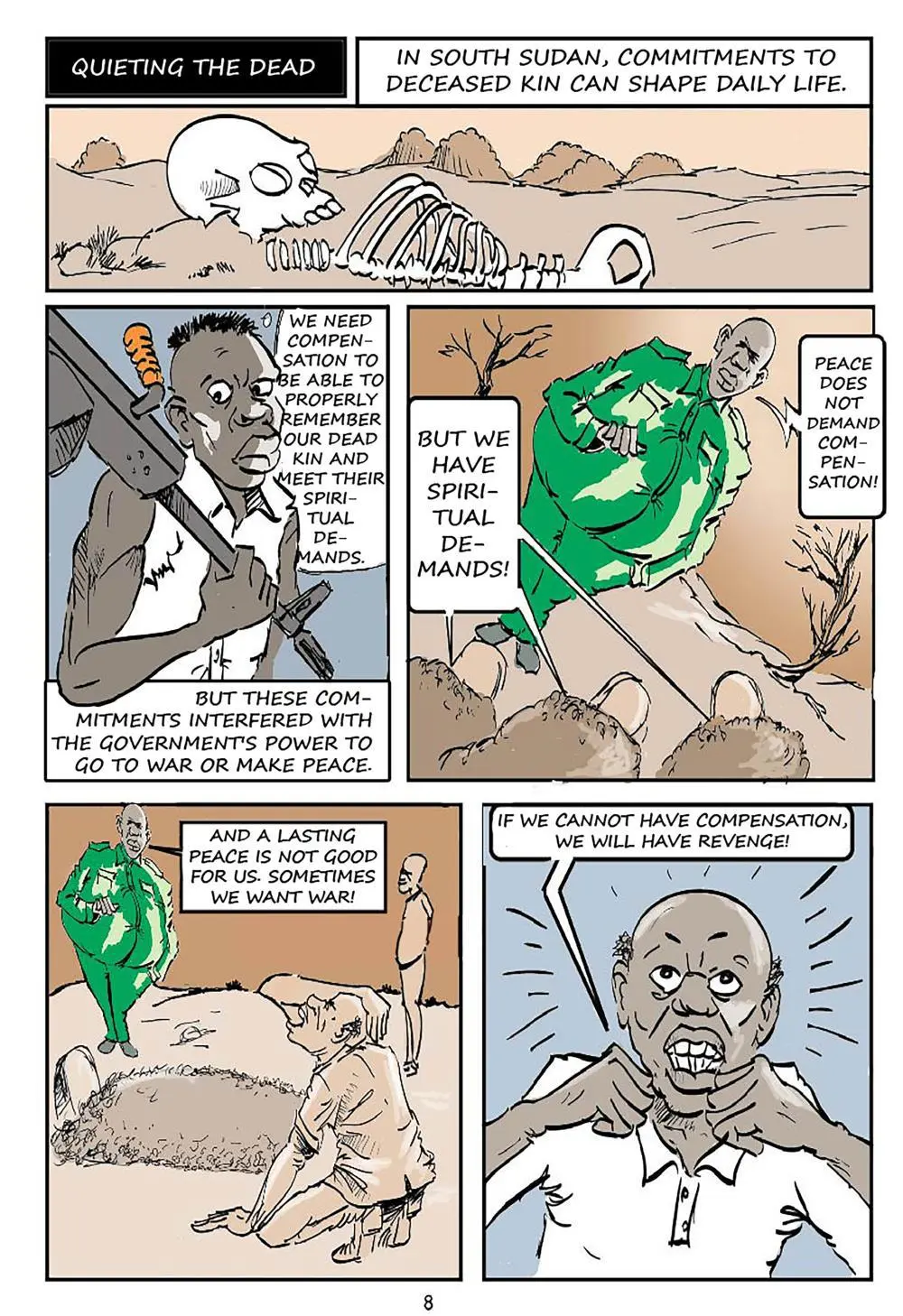
This comic was created by Cartoon Movement, a publishing platform for high quality editorial cartoons and comics journalism from all over the globe.